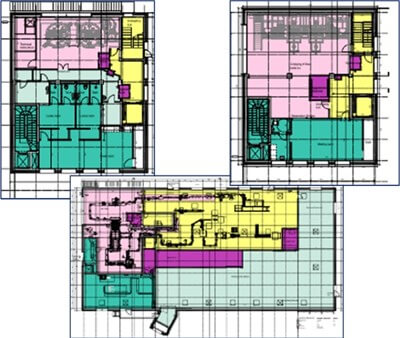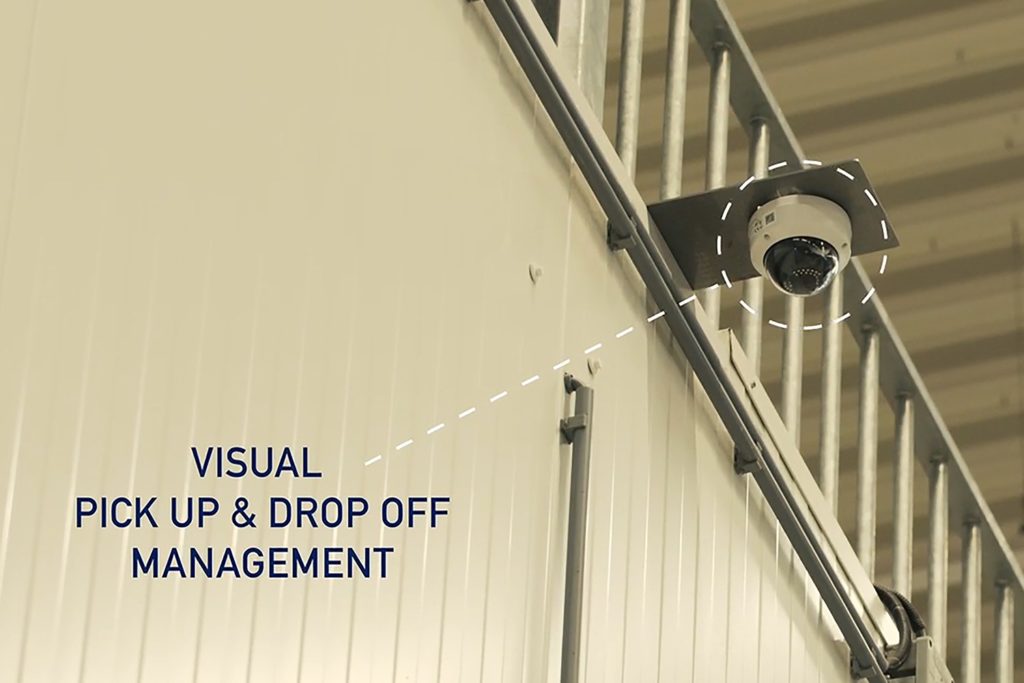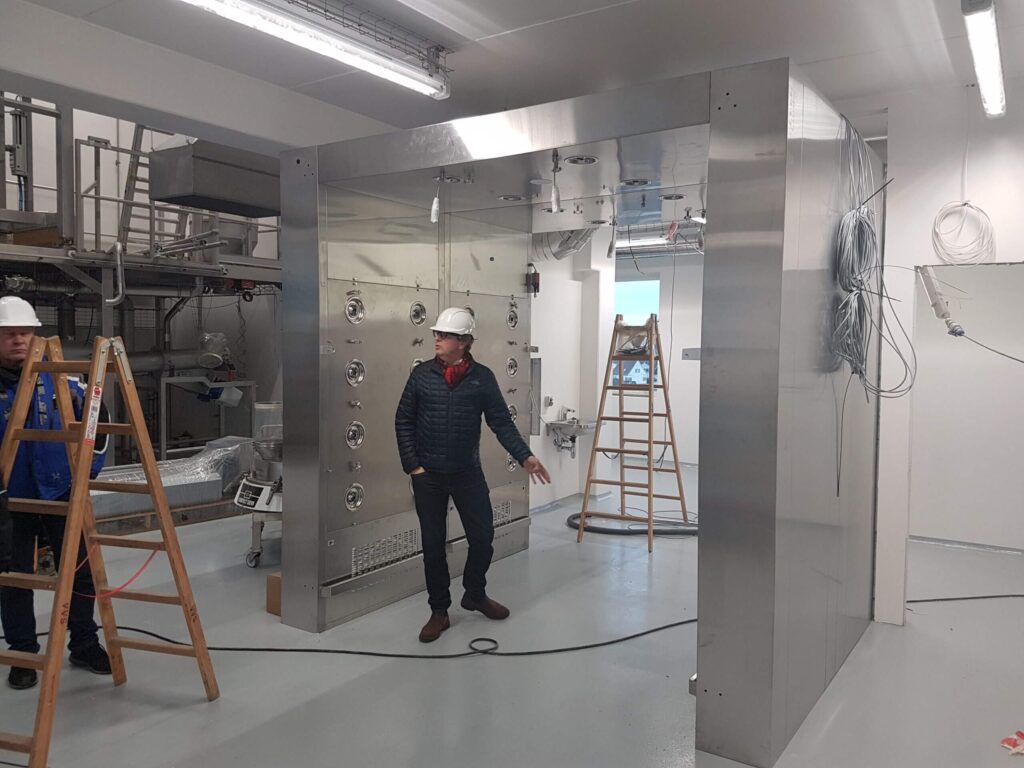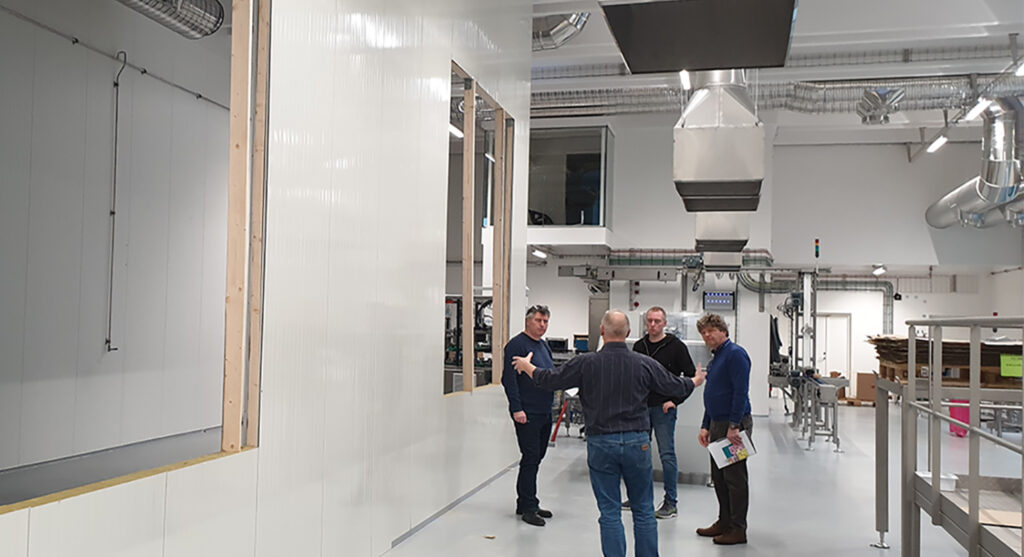The Shark that takes care of your baby’s food
A baby powder producer required a smart factory solution in their new plant, because the rigid hygiene regulations makes manual transport highly inefficient. Read how our AMRs work together with palletizers, electric doors, elevators and hygiene systems in the food production industry.
The Challenge
A large producer of baby milk powder recently opened a new production facility in Denmark. In this state-of-the-art factory they work with the highest hygiene standards. To guarantee the highest food safety, their production facility consists of different hygiene zones. Each time an employee goes from one zone to another, he needs to complete an extensive cleaning procedure (e.g. wash his hands, change his clothes, shoes, use automated cleaning sluices etc.). This rigid hygiene system aims to eliminate carry-over/cross contamination between different zones, a necessity in a factory that produces baby nutrition. So due to these high hygiene standards it takes human operators a lot of time, about 30 minutes, to go from one hygiene zone to another. Therefore management wanted to run the factory with minimal human capacity and perform the transport of raw materials, packing materials and finished goods as much as possible automatically. To do that, the transport robots needed to work together with several devices in the factory. So they needed a smart factory solution.

Which requirements had to be met?
The production area in the factory is divided into different hygiene zones. These zones are separated by electric doors, UV sluices and elevators. Also the filling and packing process is highly automated with robotised filling lines and palletizers. So for this project to succeed it was crucial that the AMRs could communicate and work together with all these devices. They needed to be fully integrated with the factory but also with its ERP system.

How did we solve this?
The first step is to determine the task generation. For this client, we created an integration with their ERP software based on our REST services. Our fleet management software receives an order from the ERP system and assigns the order to the best vehicle. The ŝharko10 scans the barcode of the payload to verify it with the ERP system. The vehicle will then transport the pallet to the designated drop-off location. The drop-off locations are managed by our vision technology MICK. Using our MoviĜo Device Integration boxes and specially developed PLC software we installed a system that operates as a “translator” between all the devices and the fleet of Ŝharko10. This allows our AMRs to communicate with and operate electric doors, elevators, hygiene systems (i.e. UV sluice) and other devices. And work together with them. Without human intervention.

The biggest challenges with this project
During this project a few challenges arose. One of the challenges was to enter the elevator with 1,000 KG payload. The elevator dropped a bit when driving into it, so we needed to keep both floors level. Also the gaps between the floor and the elevator needed to be reduced to prevent the vehicle’s caster wheels from getting stuck, especially when loaded with 1,000 KG.
Another challenge was to manage the different suppliers of the devices we needed integration with. Most of them have their own communication protocols and that made it challenging for the Ŝharko10 to communicate with all the different devices.
And last but not least, we needed to find the most optimal workflow with the Ŝharko10, without an infringement of the hygiene regulations.

How about the return on investment?
The factory would require four to five operators if all transport work would be done manually. With transport done with the Ŝharko the factory would run with two to three human operators. So a reduction of 2 full time employees (FTE’s) is realised. Aside from the reduction of FTE’s, efficiency increased by 82,8% as time to do a supply run is reduced from 35 to 6 minutes, reducing the chance of production stops due to absence of materials.
Other ‘side effects’ of automating internal transport by the Ŝharko are less damages during transport and higher reliability.

